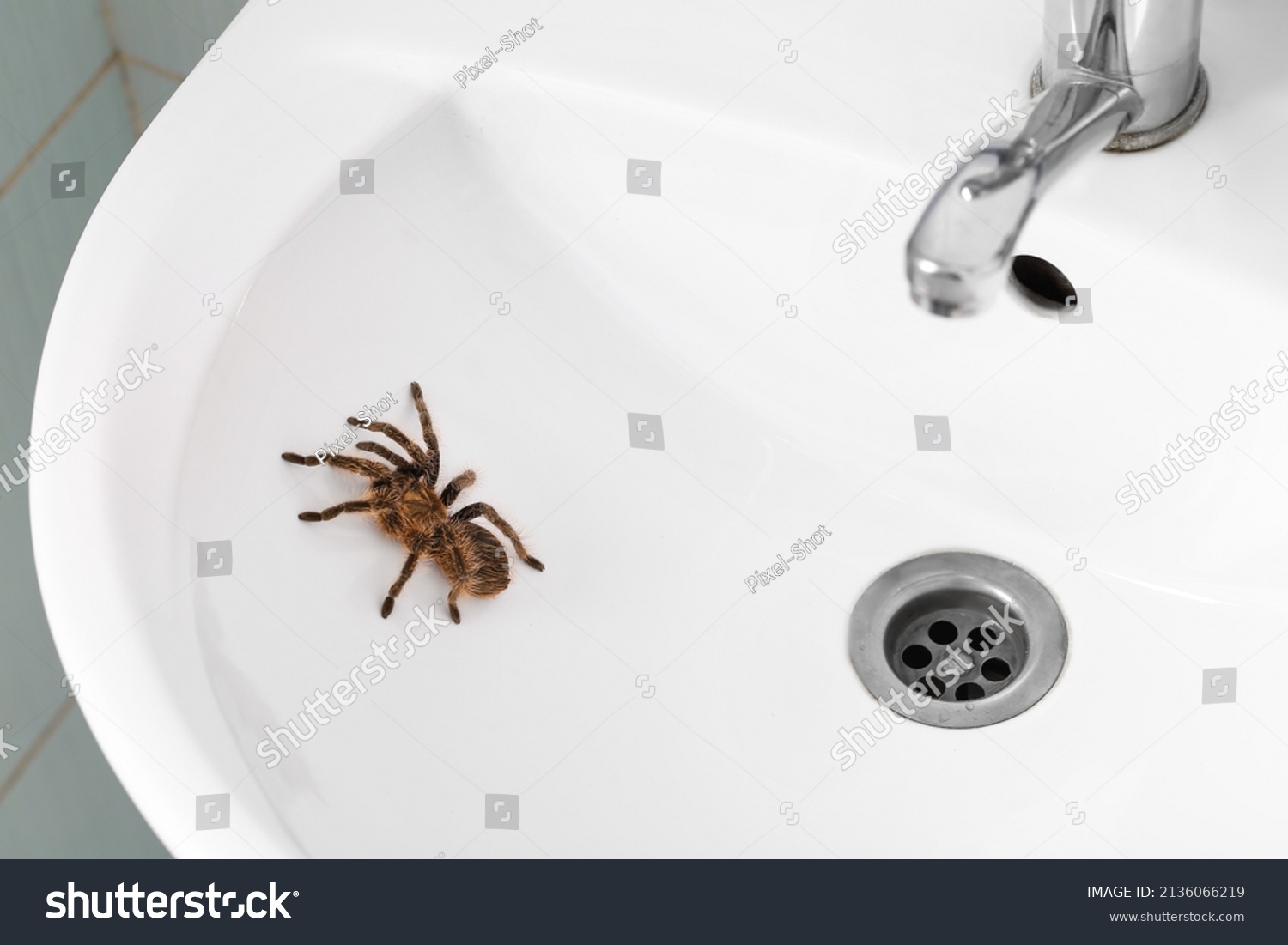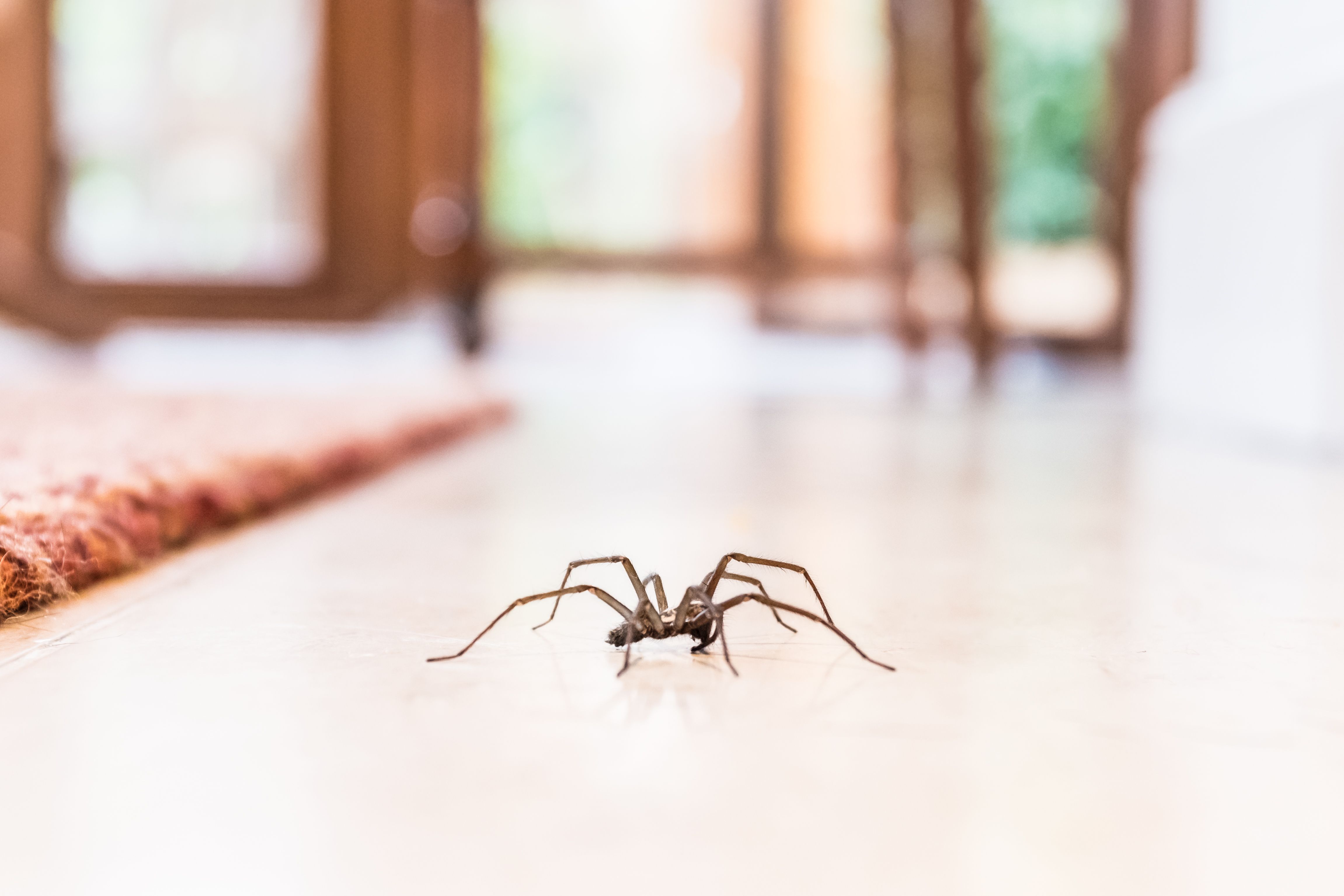Identifying Small Spiders in the Bathroom

It’s not uncommon to encounter small spiders in your bathroom, especially if you live in a humid environment. These eight-legged creatures often find their way into our homes seeking shelter, food, and a suitable place to build their webs. While most spiders are harmless, it’s helpful to be able to identify the common types you might encounter in your bathroom and understand their behavior.
Common Bathroom Spiders and Their Characteristics
Identifying different spider species can be challenging, but understanding their common characteristics and preferred habitats can help. Here’s a closer look at some of the most frequently found small spiders in bathrooms:
- House Spiders (Tegenaria domestica): These spiders are typically brown or gray with a body length of about ½ inch. They have long legs and are often found in dark corners and under furniture. They are known for building funnel-shaped webs.
- Cellar Spiders (Pholcus phalangioides): Cellar spiders, also known as “daddy longlegs,” are easily recognized by their extremely long, thin legs. They are pale yellow or light brown in color and have a body length of about ¼ inch. They build loose, irregular webs in corners and dark areas.
- Jumping Spiders (Salticidae): Jumping spiders are small, hairy spiders with large, forward-facing eyes. They are excellent hunters and can jump several times their body length. These spiders are often found on walls and windows, and they don’t build webs.
- Wolf Spiders (Lycosidae): Wolf spiders are large, hairy spiders with a body length of up to 1 inch. They are brown or gray in color and have distinctive eyes arranged in three rows. They are active hunters and don’t build webs. You might find them in dark, undisturbed areas of your bathroom.
Differentiating Harmless from Potentially Harmful Spiders
Most spiders found in bathrooms are harmless and pose no threat to humans. However, there are a few exceptions, such as the brown recluse and the black widow, which are known for their venomous bites.
- Brown Recluse (Loxosceles reclusa): These spiders have a violin-shaped marking on their cephalothorax (the head and thorax combined). They are typically found in warm, dry areas and prefer to hide in undisturbed places. Their bites can cause serious skin damage and infections.
- Black Widow (Latrodectus mactans): Black widow spiders are easily recognized by their shiny black bodies and red hourglass marking on their abdomens. They are known for their potent venom, which can cause severe pain, muscle cramps, and other symptoms.
If you suspect you have encountered a brown recluse or a black widow in your bathroom, it’s best to seek professional pest control assistance.
Identifying Spider Webs in the Bathroom
Spider webs are a common sight in bathrooms, particularly in corners, under sinks, and behind toilets. The appearance of a spider web can vary depending on the species that built it.
- Funnel Webs: House spiders are known for their funnel-shaped webs, which have a wide, open entrance leading into a narrow, tubular retreat.
- Irregular Webs: Cellar spiders build loose, irregular webs with a messy appearance. They are often found in dark corners and hanging from ceilings.
- No Webs: Jumping spiders and wolf spiders don’t build webs, but they may leave behind silk trails as they move around.
Understanding the Causes of Spider Infestations

While encountering a spider in your bathroom might seem alarming, understanding the reasons behind their presence can help you take proactive measures to prevent future infestations. Spiders, like all living creatures, are seeking basic necessities: food, water, and shelter. Bathrooms, unfortunately, often provide an ideal environment for spiders to thrive.
Factors Attracting Spiders to Bathrooms
Spiders are drawn to bathrooms due to the presence of moisture, food sources, and readily available shelter.
- Moisture: Bathrooms are naturally humid environments, attracting insects like flies, moths, and other small creatures that spiders prey on. The presence of moisture creates an ideal breeding ground for these insects, further attracting spiders to the bathroom.
- Food Sources: Spiders are opportunistic predators and will readily feed on any insects they find in the bathroom. This includes flies, moths, gnats, and other small insects that are often attracted to the moisture and food sources in the bathroom.
- Shelter: Bathrooms often provide excellent shelter for spiders. Cracks and crevices in walls, under sinks, and behind toilets offer safe spaces for spiders to build webs and hide from predators. The dark and undisturbed nature of these areas makes them particularly appealing to spiders.
Potential Health Risks Associated with Spider Infestations in Bathrooms
While most spiders found in bathrooms are harmless and pose little threat to humans, some species may carry allergens or bite if provoked.
- Allergies: Spider webs and shed exoskeletons can trigger allergies in sensitive individuals. These allergens can cause symptoms such as sneezing, runny nose, itchy eyes, and skin rashes.
- Bites: While most spider bites are not medically significant, some species, such as the brown recluse spider, can deliver a venomous bite that requires medical attention. If you suspect a spider bite, it is important to seek medical advice immediately.
Relationship Between Poor Sanitation and Spider Infestations in Bathrooms, Small spiders in bathroom
Poor sanitation in bathrooms can significantly contribute to spider infestations.
- Accumulation of Debris: Bathrooms are often prone to the accumulation of debris, such as hair, food particles, and dust. This debris attracts insects, providing a readily available food source for spiders.
- Lack of Regular Cleaning: Regular cleaning and sanitation are crucial to prevent spider infestations. Cleaning up spills, wiping down surfaces, and vacuuming regularly helps eliminate food sources and potential hiding places for spiders.
- Presence of Standing Water: Standing water in the bathroom, such as in a leaky faucet or a clogged drain, can attract insects and create a breeding ground for spiders. It is important to address any leaks or drainage issues promptly.
Preventing and Eliminating Small Spiders: Small Spiders In Bathroom

Small spiders in bathroom – Once you’ve identified the small spiders in your bathroom and understood why they’re there, it’s time to take action! Preventing and eliminating these eight-legged visitors requires a two-pronged approach: preventing them from entering in the first place and removing any existing infestations. Let’s explore some effective strategies.
Preventing Spider Infestations
The best way to deal with spiders is to prevent them from entering your bathroom in the first place. Here are some tips:
- Seal Entry Points: Spiders can squeeze through surprisingly small cracks and crevices. Inspect your bathroom for any gaps around windows, doors, pipes, and vents. Seal these openings with caulk, weather stripping, or expanding foam.
- Reduce Moisture: Spiders are attracted to damp environments. Ensure proper ventilation in your bathroom by using an exhaust fan during and after showers. Address any leaks or plumbing issues promptly.
- Remove Food Sources: Spiders feed on insects. Eliminate potential food sources by keeping your bathroom clean and free of clutter. Pay particular attention to areas where insects might gather, such as around drains and under sinks.
- Keep Lights Off: Spiders are nocturnal creatures. Leaving lights on at night can attract insects, which in turn attracts spiders. Consider using motion-activated lights instead.
- Regular Cleaning: Vacuum regularly, paying attention to corners, under furniture, and other areas where spiders might hide. Wipe down surfaces to remove dust and cobwebs.
Eliminating Existing Spider Infestations
If you already have a spider infestation, you can take steps to remove them and discourage them from returning.
- Natural Remedies: There are several natural remedies that can help deter spiders. These include peppermint oil, citrus peels, and vinegar. You can spray these solutions around areas where you’ve seen spiders.
- Vacuuming: Use a vacuum cleaner with a hose attachment to remove spiderwebs and any spiders you find. Dispose of the vacuum bag or contents immediately to prevent the spiders from escaping.
- Sticky Traps: Sticky traps can be effective at catching spiders. Place them in areas where you’ve seen spiders or where they might be traveling.
- Professional Pest Control: If you have a severe infestation or if natural remedies haven’t worked, you may want to contact a professional pest control service. They can identify the type of spider and recommend the most effective treatment.
Removing Spiderwebs
Once you’ve removed the spiders, it’s important to remove their webs to prevent them from returning. Here’s how to do it safely:
- Gather Supplies: You’ll need a broom, dustpan, and a spray bottle filled with water. Optional: Wear gloves for protection.
- Spray the Web: Spray the web with water to make it easier to remove and to prevent dust from flying around.
- Sweep the Web: Use the broom to sweep the web into the dustpan. Be careful not to disturb the spider if it’s still there.
- Dispose of the Web: Seal the web in a plastic bag and dispose of it in the trash. This will prevent the spiders from escaping and rebuilding their webs.
